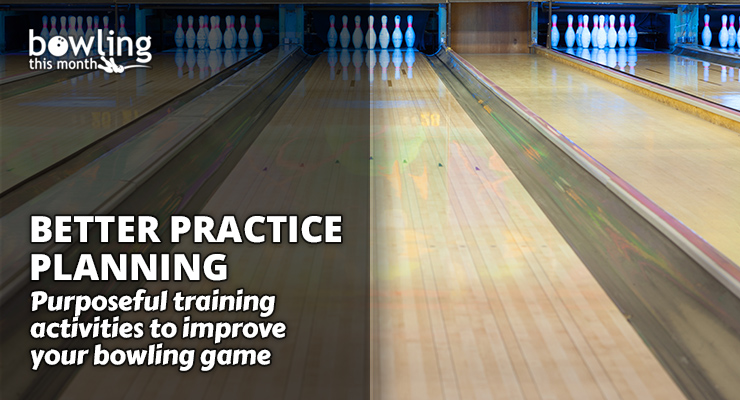Article Contents
- 1. The four kinds of practice
- 1.1. Technical practice
- 1.2. Skill practice
- 1.3. Versatility practice
- 1.4. Competition simulation
- 2. The reality of training
- 3. What kinds of activities should we do?
- 3.1. Technical training
- 3.2. Skill training
- 3.3. Versatility training
- 3.4. Competition simulation
- 4. The order of training
- 5. Final thoughts
Note: This article is only available to Bowling This Month subscribers.
It’s about that time when people are looking at the new year with high hopes, perhaps setting some goals to change certain aspects of their lives. And maybe even a few of those goals are about bowling.
But, as the saying goes: a goal without a plan is just a wish.
With that in mind, this article’s goal is to help improve the quality of your practices, by reviewing the four kinds of practice that I covered a few years ago. Then we’ll dive deep into the elements that make up an effective training session. And finally, we’ll discuss how to organize your practice to get the most benefit.
The four kinds of practice
As a quick refresher of what I covered in detail in a previous article, here are the four categories of practice, based on the overall goal and kind of work that will be done in each.
Technical practice
A technical practice session is one where the focus is on your technique, or the more “permanent” elements of your game. For example, if you are working on changing your footwork or refining your swing, then it’s a technical practice. These practices tend to have a high volume of repetitions of a specific element of your game, with the bowler focusing on details.
Technical practice is generally low in intensity, but it should still challenge the bowler to stay in the learning zone by modifying the activity from time to time. For example, a never-ending cycle of swing drills will have limited value after a little while, so a bowler can continue working on the swing by switching things up and using more full approaches that focus on a specific swing detail, with video review.
Skill practice
This practice is where you develop your adaptability by working on the variable parts of your physical game: axis rotation and/or tilt, ball speed, and loft. These practice sessions are similar in nature to technical practices because they ...
Already a premium member? Click here to log in.


